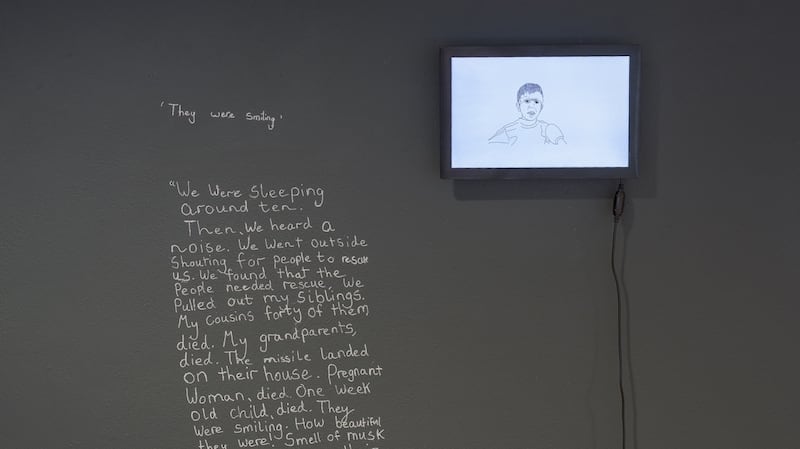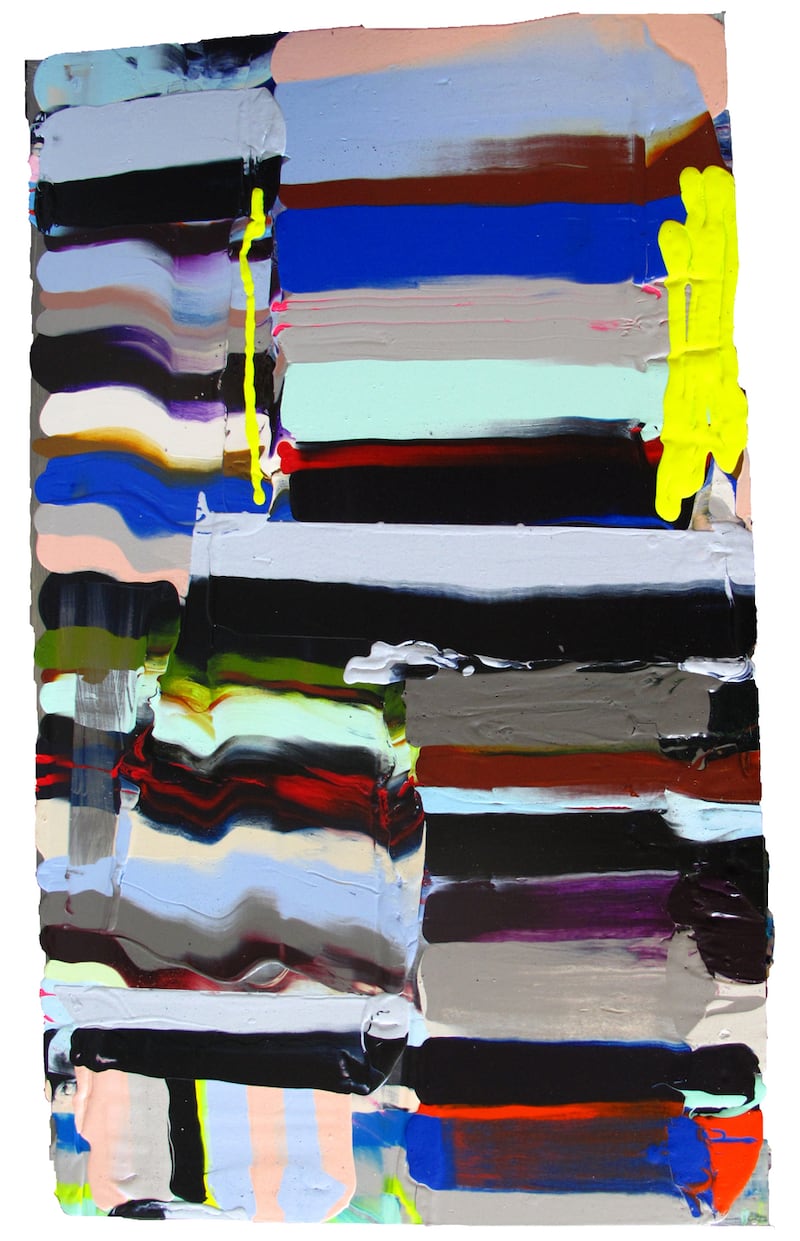THE PAST IS A FOREIGN COUNTRY
Anita Groener
★★★★
The Lab Gallery, Dublin City Arts Office, 1 Foley St, Dublin until August 17th; dublincityartsoffice.ie/the-lab/
The Past is a Foreign Country hinges on an act of symbolic cruelty that helps to drive home its point and conveys something of the vehemence of feeling bound up in Anita Groener’s approach to her subject matter. In The Lab’s main gallery space, 20 spindly birch stems, arranged in a grid pattern, are suspended from above. They have been shorn of their branches, which have been reconfigured into lines of tenuous linkage between them. Their vestigial root balls hover uselessly above the floor.
Groener drew her title from LP Hartley’s 1950s novel The Go Between, in which the title character recalls his uncomprehending role in a series of tragic events during his childhood at the beginning of the 20th century. The installation, which began a tour of several venues at the Limerick City Gallery last year (and will conclude its tour at Uilinn in Skibbereen later in the year), is a response to the experience of war, forced migration, refugee camps, unremitting loss and suffering on the part of so many people, children and adults, mostly displaced by the war in Syria. Groener’s thwarted, uprooted birches with their delicate, peeling bark, grotesquely set adrift, form a brutally effective symbol of human tragedy.

In the mezzanine gallery space, a series of drawing animations, Moments, is based on the testimonies of five children or those close to them, who became victims of Syria’s war. The drawings are five miniature portraits. Groener collaborated with journalist Razan Ibraheem, who reported on the war and gathered the testimonies. The words, which are quietly devastating, are written onto the gallery walls by children at a local inner-city school. As Ibraheem writes: “I have watched mothers kissing the wounded head of their dead children to say goodbye . . . I have witnessed children covered in blood and still asking for a lollipop . . .”
Groener’s Citizen comprises a forest of painted twigs. Look more closely and you see columns of tiny cutout figures making their way along each fragile stem. As with all of her work, this piece deals with highly charged, disturbing events with tact and empathy. Well before the calamitous events she addresses in this exhibition, Groener had been preoccupied with the experience of moving between countries, of belonging and being an outsider, largely based on her own experience.
That is, she moved to Ireland from Holland and became used to being connected to both places via networks of links and involvements. As her family ties to the Netherlands lessened, her Irish ties grew. While associated with an expressionist idiom in painting in the 1980s, she gradually developed works displaying a cooler, more analytical approach to her concerns. That still applies but, while it’s reasonable to describe the work that makes up The Past is a Foreign Country as analytical and even austere, it certainly loses nothing in terms of bite and effectiveness.
MUSICA UNIVERSALIS
Natalia Black
★★★★
Green on Red Gallery, Park Lane, Spencer Dock, Dublin until July 6th; greenonredgallery.com
Born in Martin, Slovakia, Natalia Black studied fine art and also English language and literature before moving to Northern Ireland where she began to exhibit her work around 2004. She is a painter who loves the substance of paint as much as its colour. Her paintings often appear as blocks of acrylic pigment arranged in bands and ripples. They suggest associations with stratified geological formations and also, given her bright, bold palette, with sweets or confectionary: those luscious concoctions look good enough to eat.
In fact, if she had followed a representational rather than an essentially abstract path, her work might have converged with that of Wayne Thiebaud, the American artist who famously elucidated the link between the appetising appearance of mass displays of such foods as cakes and hot dogs, and paint as substance, not just colour. Closer to home, Black’s work also parallels some aspects of Paul Doran’s paint-as-substance phase. That was typified by his outstanding MFA show work, and he has moved on from that in various ways.

Black has also moved on significantly from her earliest work, which was sometimes vulnerable to the charge of being too sweet, almost facile. That could not be said of her more recent work. Although her show is titled Musica Universalis, with reference to the early, Pythagorean theory that the heavens were arranged in perfect geometric harmony, following on from Pythagoras’s observations on musical pitch, Black’s compositions depend on all sorts of departures from neat formulaic patterns and harmonies (as indeed do the heavenly bodies). As she puts it: “There is noise as well as music coming from each of the images.”
To return to the geological analogy, she has allowed for folding and faulting, for volcanic activity, orogeny and shifting tectonic plates. Things are generally in a state of flux, patterns distorted and broken, clashing with and supplanted by others. Dynamism prevails. The expansive, east-facing wall of Green on Red is almost entirely glazed, with several bays of windows in a square-framed grid. Black has taken advantage of the setting to make a translucent installation, a variant of stained glass in a series of compositions, which runs along the glass grid. It’s a nice touch in a fine show.












